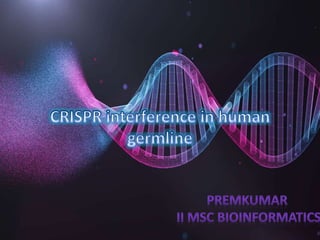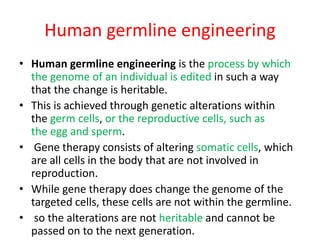Genome editing uses engineered nucleases to insert, delete, or replace sections of the genome. CRISPR/Cas9 is a popular genome editing technique that uses guide RNA to direct nucleases to specific DNA sequences. While promising for treating disease, human germline editing raises ethical concerns. Early studies editing human embryos and non-viable embryos demonstrated proof-of-concept but had low efficiencies and off-target mutations. Later studies improved targeting and showed potential for correcting genetic defects. However, regulation is needed as the first claimed use of CRISPR to genetically edit human babies was unapproved.






















